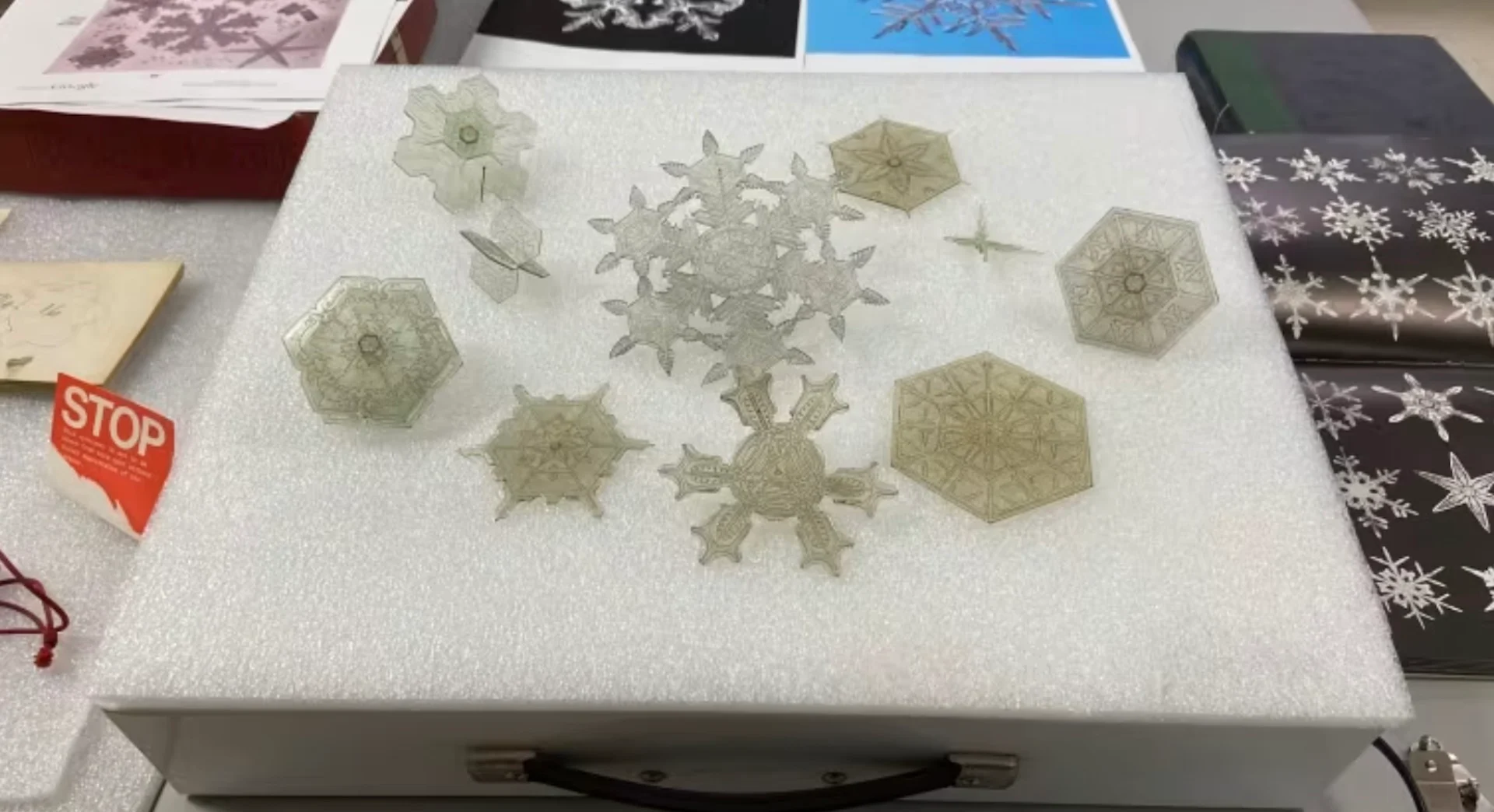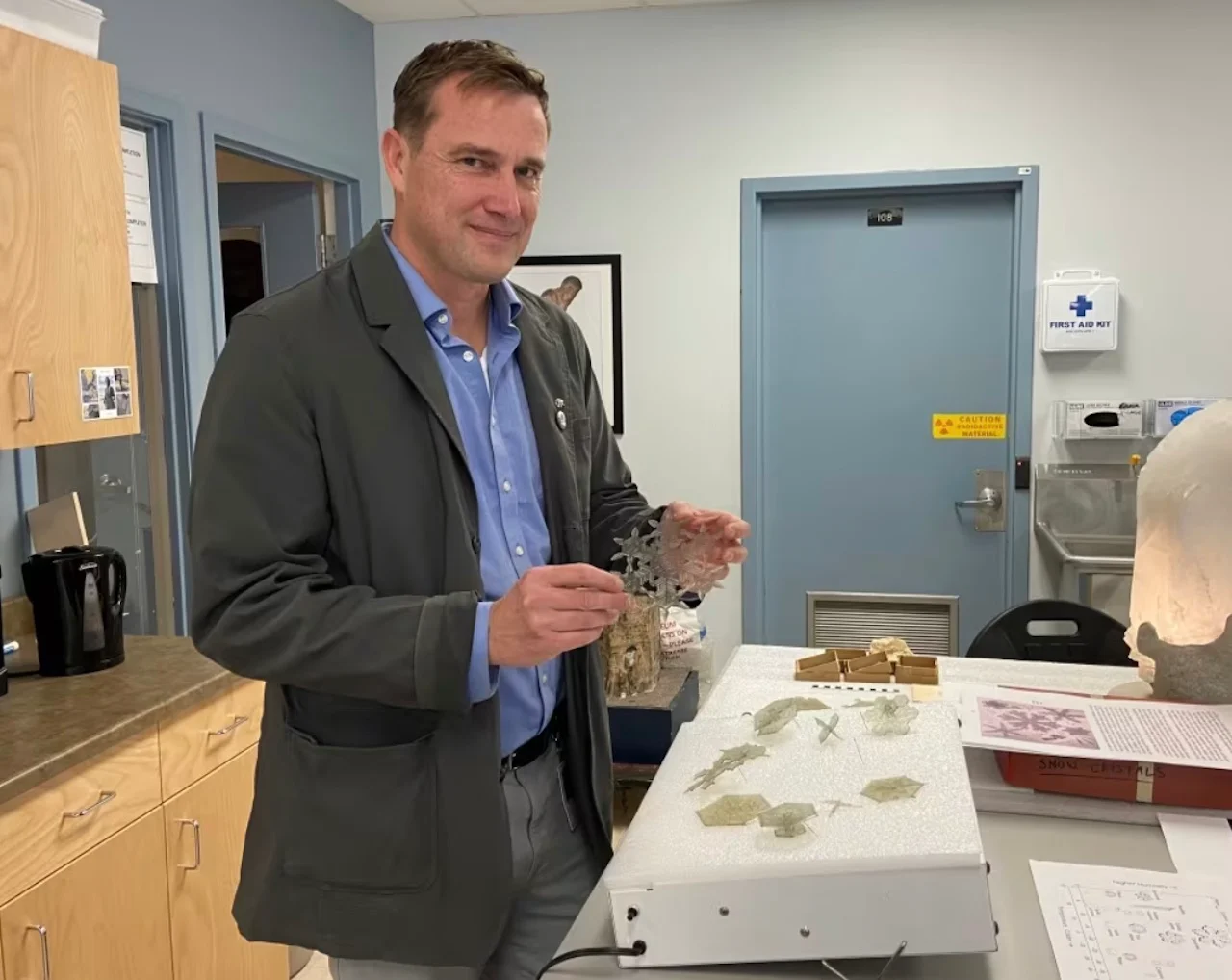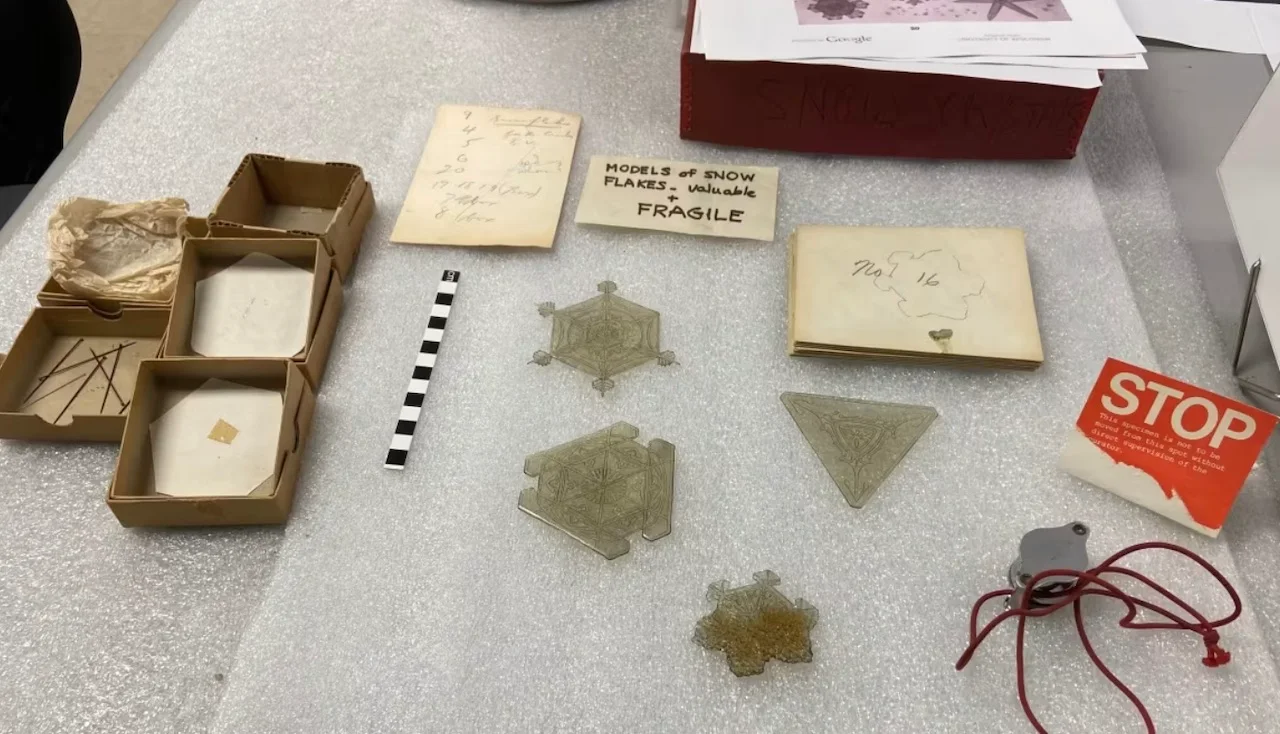
Scientifically accurate snowflake models discovered likely first of their kind
Scientifically accurate snowflake models recently discovered at the Nova Scotia Museum of Natural History after decades in storage are likely some of the first ever created, one curator says.
Tim Fedak said he found the delicate, plastic, scaled-up models in the museum's geology collection last month.
"We do have a lot of things that are well-documented, but there are things here that do have a lot of age to them," Fedak, who is the curator of geology, told CBC Radio's Information Morning Halifax.
Visit our Complete Guide to Winter for an in-depth look at the Winter Forecast, tips to plan for it and much more!
"And that's part of the really cool thing about working in a museum — you open a drawer and you're just looking at things that someone hasn't really necessarily looked at in a deep way for a while."
Fedak said the models, which could easily be mistaken as winter ornaments, came with little information. The only clues were the box they were stored in that said "Snow crystals," some envelopes with numbers on them and a note that said, "Snowflakes for M Crowdis TV."
Donald Crowdis was the director of the museum from 1945 to 1960, so Fedak said they were likely delivered in that time frame. He also assumes Crowdis used the models during an educational television interview.

Tim Fedak, the curator of geology at the Museum of Natural History, holds one of the plastic, scaled-up models of a snow crystal. (Erin MacInnis/CBC)
Fedak said once he narrowed his search to snow crystals, he was able to trace them to the Cranbrook Institute of Science in Michigan.
He said the institute had documented making snow crystal models, and displayed them in an atmosphere exhibit in 1945. They also promoted them as the first ever created.
WINTER 2024: El Niño will play a critical role in the weeks ahead
"They're beautiful and very representative of snow crystal shapes, but they also come from a really interesting time period of 1940, just when scientists were really starting to understand the classification of snow crystals," he said.
Fedak said snow crystals are formed as they fall through the upper atmosphere, so their intricate shapes can offer insight about the weather, temperature and humidity.
"These were cutting edge. These would be like installing an augmented reality visor in the museum, right? That's really cool today," he said. "These were really cool in 1950. Like, these were state-of-the-art, handcrafted, very rare."

The items in the collection had little information with them which required Fedak to do some digging. He was able to trace their creation to the Cranbrook Institute of Science which is part of Michigan's Museum Of Natural History. (Erin MacInnis/CBC)
Fedak reminded people to take a moment to appreciate snowflakes when they're falling.
"Patterns that form through normal natural processes, so crystal formation or even the rings of trees or shapes of feathers, all those sorts of things, there's an innate beauty in that," he said.
"It's amazing to think of all the snow crystals falling down during a snowstorm and if you don't think about having to shovel the driveway, but rather all of the beauty that's around there, just take the moment to see that, it's quite astounding."

Fedak said he's working on an exhibit for the museum that will include the snow crystal models. He said he expects it to be ready in the coming weeks.
WATCH: 'They're ginormous!': B.C. resident surprised by large snowflakes
Thumbnail courtesy of Erin MacInnis/CBC.
The story was originally written by Cassidy Chisholm and published for CBC News. It contains files from Erin MacInnis.